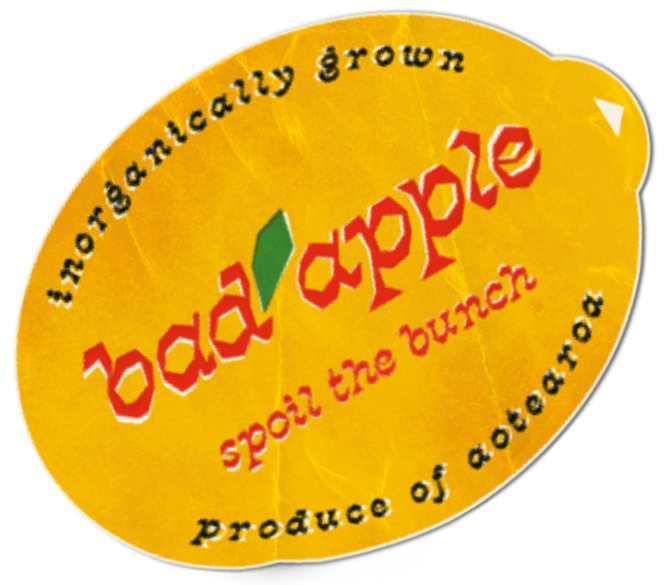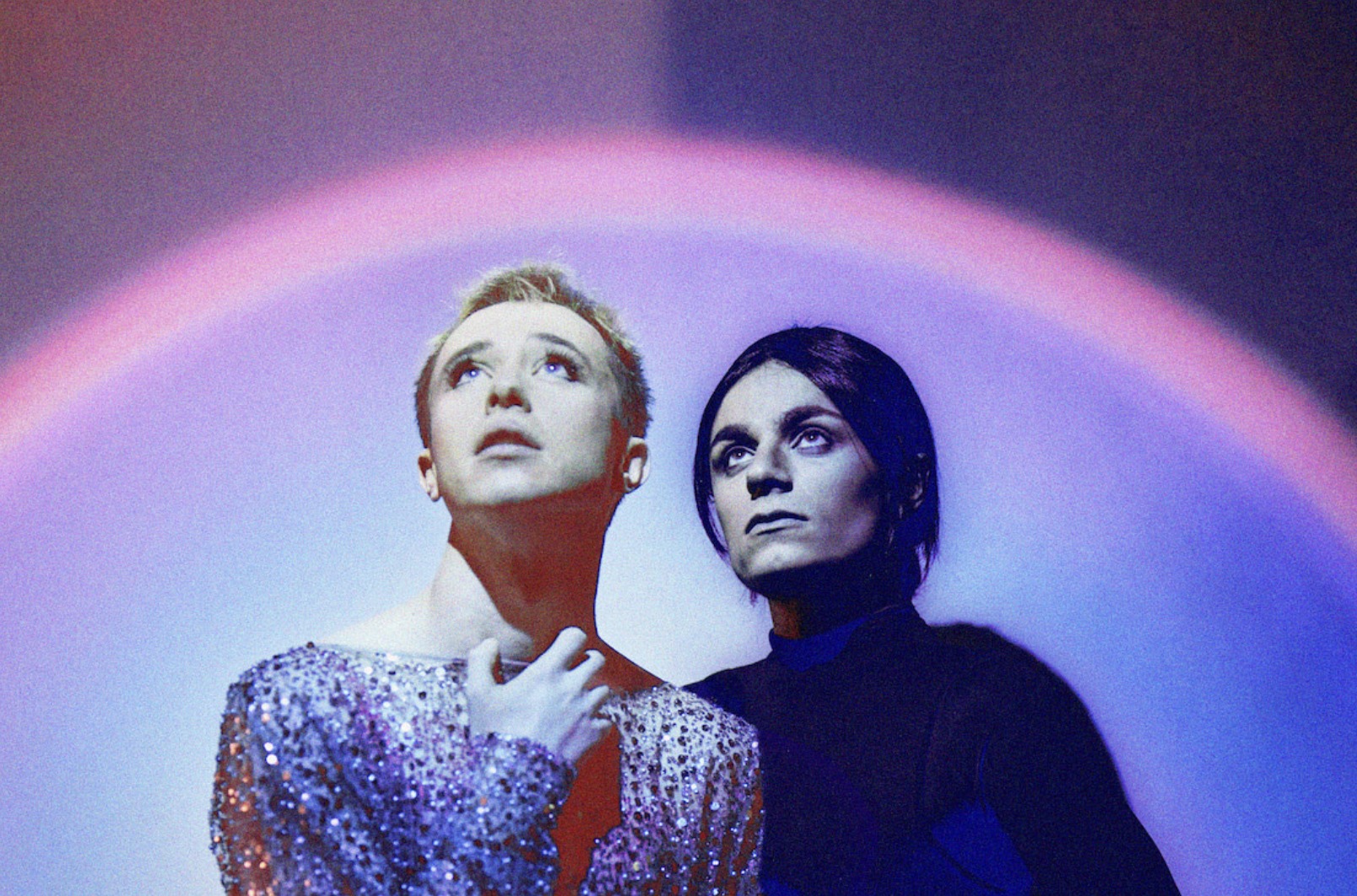If you’re interested in supporting Murdoch and Peter in taking their work to Melbourne and generally interested in supporting The Arts, there is a fundraiser show of She’s Crowning at Basement Theatre on Wednesday 6 September.
It’s an undoubtedly ambitious premise, two performers drawing together the stories of Minnie Dean and Judy Garland over the course of an hour in the Basement Studio. To attempt to do so for even one of these figures would more than fill the runtime—their respective legacies, their indisputable notoriety, loom large, and are still reverberating. Though the backdrops to the two women’s production-proclaimed infamy are worlds apart, the fact of said infamy serves as common ground enough: where does the truth live in stories like these ones? When does the myth extend beyond the subject, and what does that do to the person at its centre?
If there’s anyone equipped to answer these questions—complete with lip syncs, accent work, projection, and a pitstop into sketch—it’s the team who took on The Crown, and the Crown: Peter Burman and Murdoch Keane. Reuniting after the successful Rebirth of She’s Crowning at this year’s Auckland Pride, Minnie & Judy sees Burman and Keane combine previous solo performance works to create an iconoclastic, tonally chameleonic historical double act.
Minnie and Judy’s engagement with these histories, the juggle of what we know and what we can’t—and also what will function within the framework of an hour-long show—begins immediately. Keane makes use of Garland’s own personal recordings, offering up a grounded lipsync depiction of these musings on selfhood that also sets the stage for a more heightened payoff later on. The dialled-back opening provides an anchored pearl of a jumping-off point. And jump off the work does.
We’re treated to horror story exposition to contextualise Minnie Dean, genre-appropriate Londonesque accents accompanied by stings coming so loud through the speakers the scene becomes legitimately frightening (credit here to Reon Bell’s sound design, which drives home both the humour of Minnie & Judy and its eventual pathos, creating a soundscape that heightens the experience of the show, meeting the sensibility of performance and content even in a space as intimate as the Studio). We meet Dorothy Gale, complete with plaits and gingham, albeit with alterations to colour. The familiar would-be gags are deployed, as is the occasional local in-joke, and a copyright-dodging audience participation segment that reveals a certain [Colour] [Material] [Avenue-of-Sorts]. (There is a pair of glittering red heels in Keane’s chair at the opening of the show, but they go without too much fanfare.) Keane’s Dorothy—carefully avoiding any jokes at Garland’s expense—is deftly overdrawn, and proves a hit with the audience. Likewise, I can’t in good conscience not mention that, while he kills it as the Aunt Em figure, Burman also delivers a great Toto.
There are also some unexpected highlights beyond any kind of source material connection. In particular, French detective Pierre Pierre Pierre (Burman) arrives on the scene—equally French, cabaretesque assistant (Keane) in tow, and at times attached almost as a shadow—to investigate Minnie Dean. This conceit lands as both a left-field choice and a genuinely funny sequence, and—somehow, even with the content of the Dean ‘storyline’—the laughter doesn’t stop there. Burman, this time as Dean, enlists an audience member to ‘type’ as Dean dictates various drafts of an advertisement for her services as a childminder. It’s an exercise in advertising, ultimately, and toes the line—as much of the show might—depending on where you sit historically regarding Dean’s case, but the delivery of it, as well as the sound design flourishes and the specific audience member’s willingness to yes and, confirms both Burman’s comedic chops and his and Keane’s canny approach to crowdwork (a throughline from my review of She’s Crowning: Rebirth).
Where Minnie & Judy deviates from the palate of She’s Crowning is in its allowance for quieter moments, wherein the designs on comedy fall away. Keane as the teenaged Garland is told, despite earlier promises, that she won’t be allowed to go to a school dance—told by Burman’s Margaret Hamilton how easily women are transformed into witches (Wicked Witches, even); told how the commodification will continue, how the product will always come first. There’s a tragedy to the moment, but solidarity as well. Later, Garland’s recordings resurface, as we see Keane—adorned in a glittering gown—play the physical juxtaposition between the personal and the professional: the struggling Garland, mistreated, overworked, unwell, and the star belting out her hits. The dichotomy is sharp—it tugs at the heart, and Minnie and Judy holds the moment, the back-and-forth extended, until we in the audience are, ourselves, almost carried off in the cycle of it.
“Minnie & Judy cements the strength of the Burman/Keane double act, giving fans of their comedic work lots to love whilst simultaneously indicating a capacity to tug at the heart[…]”
Burman delivers an analogous set piece as Dean: detectives dispensed with, there comes the news that the police will be coming to search the property; with only a single, handheld light, Burman takes us through Dean’s version of events. (Minnie and Judy’s Dean’s version, of course.) This is an intimate, nuanced portrait—a far cry from the horror film sting earlier in the hour. Burman holds it well, gently. Even the movement of the light in his hand feels considered: it plays as natural, initially close on Burman’s features, like Dean telling her own ghost story, her own campfire tale, then moving out and slightly wider, to capture Keane (in Garland’s gown) bearing silent witness, before pulling back in on Burman again.
These unspoken moments of connection between the titular figures hold a great deal of weight: they feel like the show’s deepest tissue, paying off earlier gags like Dean and Garland co-piloting a cooking segment of the Judy Garland Christmas Show. The closing sequence sees Burman and Keane shed the costumes that have come to represent Dean and Garland, place them side by side on clothes hangers, and, in dual silence, pull the ropes that raise them up. It plays as a moment of acknowledgement, a very literal send-up, at the same time echoing, of course, the circumstance that makes Dean particularly noteworthy in our history. It’s a strong end to the show: leaning into the thematic allows for the tying together of an hour as eclectic as this one, its broadest comedy and its most grounded appeals drawn to a final point. The work feels most cohesive, and most contemplative, here.
Minnie & Judy cements the strength of the Burman/Keane double act, giving fans of their comedic work lots to love whilst simultaneously indicating a capacity to tug at the heart—an interest in creating work that asks audiences to sit with it, a stillness alongside the uproarious laughter. I’m intrigued to see where this impulse takes them: one of comedy’s greatest tools is that of allowing its audiences to be open, receptive in a way that then lets any subsequent pathos anchor itself somewhere far deeper.
In the meantime, though, when the lights come up after the curtain call, Burman and Keane reveal they are headed to Melbourne in October. They’re aiming to take She’s Crowning to the Fringe. I’m excited for them—and interested, as I mentioned in my review of that show, in the reception of the work overseas. They’ve performed iterations of it at venues across Tāmaki Makaurau, toured it to acclaim throughout Aotearoa; over the past hour of Minnie & Judy, they’ve taken us to Invercargill, Hollywood, Kansas, and beyond. It makes sense, then, for Burman and Keane, that what comes next is a [re]turn to Oz.
Featured image courtesy of Murdoch Keane and Peter Burman via Basement Theatre.



